#global folktale
Text
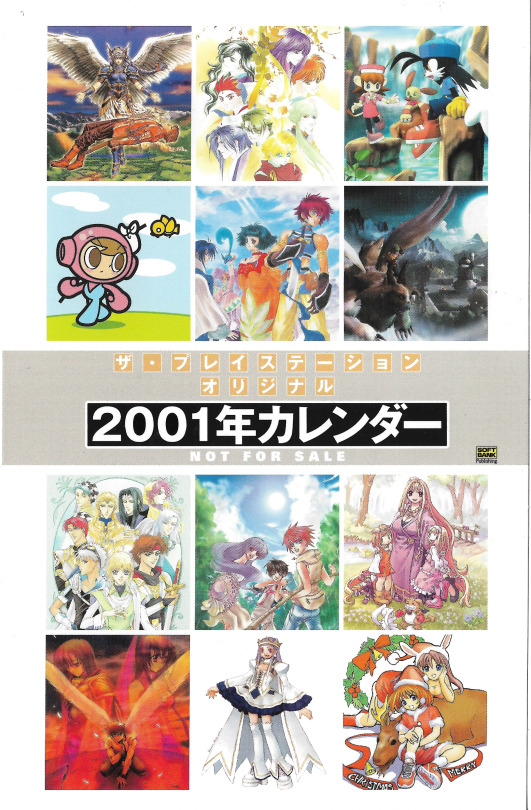
From: The PlayStation Original Year 2001 Calendar
#playstation#ps1#valkyrie profile#Haruka: Beyond the Stream of Time#klonoa#mr. driller#tales of eternia#dark cloud#Angelique Trois#global folktale#Rhapsody#Black/Matrix#Abarenbou Princess#Favorite Dear: Jyunpaku no Yogensha#black matrix#ps2
105 notes
·
View notes
Text

"Ohhh fuck bro, yeah, get inside of me," said the newly promoted investment banking analyst as he let his small intergalactic friend slipped right back in through his anus after blowing his cock. Cristobal entered UPenn through scholarship as a talented soccer player, so no one expected him to not only ace his college soccer career, but also graduating in the upper rung of his Finance degree. Not like it's very hard or anything, but Cristobal, or Chris in its anglicized version, is never known to be a rather bright student. Even his GPA in the first two semester were not stellar or anything. Of course he didn't disclose the fact that a small-yet-brilliant, intergalactic being with light-years ahead computational abilities and civilization beyond human comprehension slid into him during one of his away game. That little bundle of brilliance turned around Cristobal's fate as it cohabited with the handsome Latino stud, and life went so much smoother for the suddenly very studious Cristobal.
And with every milestones they achieved together, as a way to show his gratitude, Cristobal would feed his little partner with his blissfully tangy and creamy spunk that looked like the elixir of the deities in the creature's folktale. A double promotion is certainly worthy of copious amount of cum, that's why Cristobal already planned an explosive night where he will have a threesome with one of the Assistant Vice President (in IB, AVP is like, middle management, nothing really high or anything but still a rather powerful position) and his wife. Well, it's a dinner for starter, but the little fella already aimed at the hunky DILF ever since Cristobal seen him changing clothes in his office after his morning workout on the ground floor's gym and also the encounter during bathroom break where the AVP gingerly smiled at Cristobal as they make eye contact while he stuffed his definitely fat cock into his suit pants after pissing in the urinoir

He's going to make the move tonight and put that hunk and his wife under its alien mate control, sharing the blissful devotion to serve the brilliant intergalactic being
If the AVP already under its control, maybe the little creature can spread across the AVP rank and then proceed to climb higher within his influential investment banking leadership to see how much control it can exercise not only over the company, but to the global financial landscape as it sees fit. After all, it's been a rather lonely few years for the little creature, maybe its time to call some of its friends to Earth and reap some more bliss in life from the oblivious human.
205 notes
·
View notes
Text

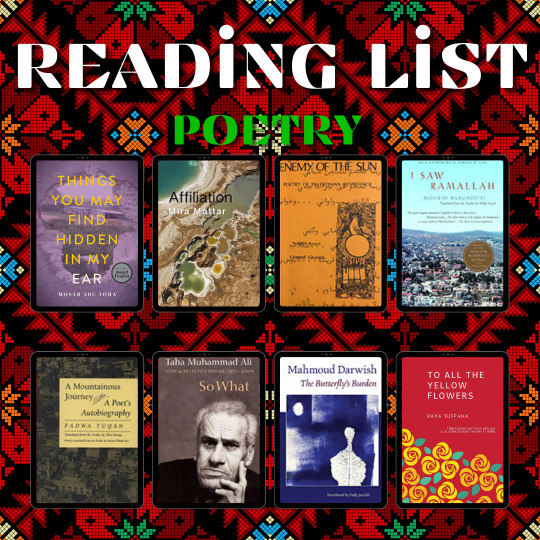

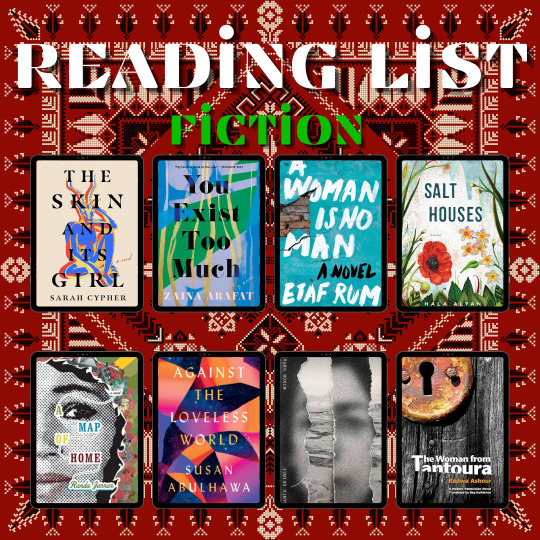




Read Palestine Week
🇵🇸 Good morning, my beautiful bookish bats. Can I start by saying a huge THANK YOU for sharing my Queer Palestinian Book post? Seriously, thank you so much. Let's keep that momentum by observing Read Palestine Week (Nov 29 - Dec 5). I've compiled a list of books to help you, along with a list of upcoming events and resources you can use this week and beyond.
🇵🇸 A collective of over 350 global publishers and individuals issued a public statement expressing solidarity with the Palestinian people. Publishers for Palestine have organized an international #ReadPalestine week, starting today (International Day of Solidarity with the Palestinian People).
🇵🇸 These publishers have made many resources and e-books available for free (with more to come). A few include award-winning fiction and poetry by Palestinian and Palestinian diaspora authors. You'll also find non-fiction books about Palestinian history, politics, arts, culture, and “books about organizing, resistance, and solidarity for a Free Palestine.” You can visit publishersforpalestine.org to download some of the books they have available.
POETRY
🌙 Things You May Find Hidden in My Ear by Mosab Abu Toha
🌙 Affiliation by Mira Mattar
🌙 Enemy of the Sun by Samih al-Qasim
🌙 I Saw Ramallah by Mourid Barghouti
🌙 A Mountainous Journey by Fadwa Tuqan
🌙 So What by Taha Muhammad Ali
🌙 The Butterfly’s Burden by Mahmoud Darwish
🌙 To All the Yellow Flowers by Raya Tuffaha
FICTION
🌙 Gate of the Sun by Elias Khoury
🌙 Speak, Bird, Speak Again: Palestinian Arab Folktales
🌙 Men in the Sun by Ghassan Kanafani
🌙 Morning in Jenin by Susan Abulhawa
🌙 Gaze Writes Back by Young Writers in Gaze
🌙 Palestine +100:Stories from a Century after the Nakba
🌙 Wild Thorns by Sahar Khalifeh
🌙 Out of Time by Samira Azzam
🌙 The Skin and Its Girl by Sarah Cypher
🌙 You Exist Too Much by Zaina Arafat
🌙 A Woman is No Man by Etaf Rum
🌙 Salt Houses by Hala Alyan
🌙 A Map of Home by Randa Jarrar
🌙 Against the Loveless World by Susan Abulhawa
🌙 Minor Detail by Adania Shibli
🌙 The Woman From Tantoura by Radwa Ashour
NON-FICTION
🌙 Blood Brothers by Elias Chacour
🌙 Strangers in the House: Coming of Age in Occupied Palestine by Raja Shehadeh
🌙 Palestinian Art, 1850–2005 by Kamal Boullata
🌙 Palestine by Joe Sacco
🌙 The Hour of Sunlight: One Palestinian’s Journey from Prisoner to Peacemaker by Sami Al Jundi & Jen Marlowe
🌙 Palestine: A Four Thousand Year History by Nur Masalha
🌙 Justice for Some: Law and the Question of Palestine by Noura Erakat
🌙 The Words of My Father: Love and Pain in Palestine by Yousef Khalil Bashir
🌙 Traditional Palestinian Costume: Origins and Evolution by Hanan Karaman Munayyer
🌙 Mountain against the Sea: Essays on Palestinian Society and Culture by Salim Tamari
🌙 This Is Not a Border: Reportage and Reflection from the Palestine Festival of Literature
🌙 We Could Have Been Friends, My Father and I: A Palestinian Memoir, by Raja Shehadeh
🌙 Les échos de la mémoire. Une enfance palestinienne à Jérusalem, by Issa J. Boullata
🌙 A Party For Thaera: Palestinian Women Write Life In Prison
🌙 Light in Gaza: Writings Born of Fire,
🌙 Voices of the Nakba: A Living History of Palestine
#free palestine#save palestine#books#book list#book recs#book recommendation#booklr#book blog#batty about books#battyaboutbooks#arab american heritage month#arab american writers#palestinian writers#palestinian poetry#poetry#poetry books#nonfiction#fiction books#queer fiction#queer community#queer books#muslim writers#read palestine week
208 notes
·
View notes
Note
Hello! I was wondering if you have any resources on changelings in folklore/history, or even just on fae in general? I've been eyeing fae magic for a few years now and am now thinking of taking up study of the topic in earnest. Love ur blog btw, and can't wait for the book!
I don't work with the Good Neighbors myself and fairy magic isn't my area of expertise, but I do have a few older books of related lore and folktales I can direct you to:
British Goblins, Welsh Folk-lore, Fairy Mythology, Legends and Traditions, by Wirt Sikes (1880)
Fairy and Folk Tales of the Irish Peasantry, Edited and Selected by W. B. Yeats (1888)
Fairy Legends and Traditions of the South of Ireland, by Thomas Crofton Croker (1827)
The Fairy Faith in Celtic Countries, by W.Y. Evans-Wentz (1911)
The Fairy Mythology, by Thomas Keightley (1870)
The Magic of the Middle Ages, by Viktor Rydberg (1865)
The Origins of Popular Superstitions and Customs, by T. Sharper Knowlson (1910)
The Secret Commonwealth of Elves, Fauns and Fairies, by Robert Kirk (written 1691, pub. in print 1893)
West Irish Folk-Tales and Romances, by William Larminie (1893)
All of these titles are in the public domain and should be available for free on sites like Project Gutenberg or Global Grey Ebooks. (There may also be some other titles there that you can use for historical lore reference.)
While they may not be resources for modern versions of fae magic, they definitely provide a lot of background information that was written and published BEFORE the rise of modern witchcraft, which means the authors were just recording the folklore as they found it, rather than trying to bend it into a witchy shape. (It's pretty much invariably viewed through a Christian lens, but one should keep in mind that this is part of the culture of the countries of origin when it comes to fairies and spirits.)
I also have this list of JSTOR articles related to the history of witchcraft, occultism, witch trials, and related folklore - including fairies.
Thanks for tuning in! Hope this helps!
#618foxes#witchblr#witch community#faery magic#fairy lore#book recs#free books#Bree answers your inquiries
84 notes
·
View notes
Text
animation is cinema: a primer
there's been recent discussion about animation and how it should be treated as "real" cinema and "real" art for all ages—which is true! but these social media conversations typically only touch on already popular animated films in the U.S.
i've briefly listed what i consider the best international animated films of the past 10 years as a "primer" for people who want to get into more animated movies around the world, beyond well-known directors like miyazki and moore.
there's enough variety in art direction and plot that there's something for everyone: family friendly, war dramas, romantic comedies, horror. anyone is free to add their own recommendations in the reblogs. movies are good! watch them!

boy and the world (o menino e o mundo, 2013)
adventure/family. a boy leaves his small brazilian village and discovers the industrialized city. uses collage alongside traditional animation to tell a story about globalization and capitalism that children can understand. PG.

flee (flugt, 2021)
documentary. follows a boy's escape from afghanistan to denmark, incorporating archival film footage of the time. balances the realities of war and immigration with pockets of levity and warmth. PG-13: warnings for war, human trafficking, implied sexual violence.

josep (2020)
history/drama. a dying military policeman remembers his encounter with catalan artist josep bartolí in a french concentration camp after the spanish civil war. changes art styles depending on the time period. not rated: warnings for war, sexual violence.
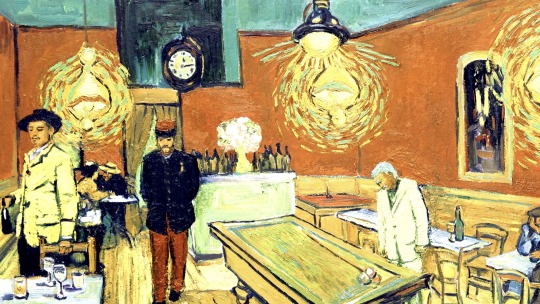
loving vincent (2017)
history/drama/mystery. a man retraces vincent van gogh's steps before his death. some truly beautiful art direction, each frame an oil painting. PG-13.

marona's fantastic tale (l'extraordinaire voyage de marona, 2019)
drama/family. follows the life of a little dog and the various people she meets. an eclectic and mesmerizing animation style, paired with a great original score. not rated: warning for animal death.
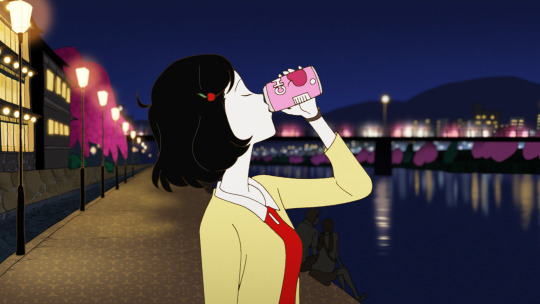
night is short, walk on girl (夜は短し歩けよ乙女, 2017)
comedy/romance. a college sophomore goes on a series of surreal encounters with the local nightlife, all the while unaware of the romantic longings of her classmate. a unique, simple art style that gets increasingly surreal as the story progresses. PG-13.

the tale of the princess kaguya (かぐや姫の物語, 2013)
drama/historical fantasy. based on the 9th century folktale where an old bamboo cutter discovers a little girl in a stalk of bamboo. beautiful use of watercolor, limited backgrounds, and simple ink strokes to complement a devastating story. PG.

the wolf house (la casa lobo, 2018)
horror/fantasy. a young woman takes refuge in a house in southern chile after escaping from colonia dignidad. surreal use of stop-motion animation that utilizes an entire house: painted walls, moving furniture, paper mâché, and more. not rated: warnings for body horror, general horror elements.
221 notes
·
View notes
Text
Journey Through the Disneyverse: The Good, the Bad and the Ugly Sides of the Mouse

I think there aren't any companies and studios with more polarizing legacies than the ones owned by the mouse.
Defenders of Disney will paint the company as a bastion of creativity and childhood nostalgia, while haters will paint it as a symbol of greed, mindless consumerism and everything wrong with American capitalism.
The truth is much more complicated, because both sides are absolutely correct at the same time.
The company is linked with some of the best pieces of animation of all time, and with some important advances in filmmaking, technology and theme park design.
Their movies and parks are careful created gems that to this day continue to draw and enchant people, becoming part of the collective imaginary of the whole planet.
A huge chunk of Hollywood movies today wouldn't exist without Disney, because they draw heavily from films from the golden age of the studio, or from other films that tried to compete with the studio.
People call the process of sanitization of fairy tales "Disneyfication", but this is not true. This is a long process that started in the Victorian Era, and reached fairy tales that Disney itself didn't reach until the 21st century.
But Disney movies are so influential that creators can't help but draw from them, even with the threat of being sued into oblivion by the mouse.
Visual cues and story beats from animated films from their golden age keep appearing in fairy tale movies, no matter how much darker, because it now feels weird to tell a fairy tale without them.
In a way, Disney is like the modern version of Charles Perrault or the Brothers Grimm, reinventing folktales to an middle class audience, but such in a well crafted way, than the original versions are sadly forgotten.

At the same the company is also linked with early cases of consumerism in Hollywood, shady and ruthless business practices, deals with undemocratic foreign powers, as well as with the lobby that killed public domain. Bob Iger also transformed the company from Hollywood powerhouse into a global monopolistic force in the last twenty years.
Disney bullies movie theater chain into showing more and more of their movies, they censorship their own films to appease China, use cheap exploited labor from China to make products . They along every single big corporation in America tries too hard to appease both sides of the political spectrum, even with the looming threat of the far right.
Is Disney wholly evil, or is the good side of it, the creative side of it, capable of redeming the bad?
I honestly don't know.
That's the downside of living under Capitalism. Everyone is corrupt, and you can't really choose much. Disney is as greed and corrupt as the rest of the Hollywood powers. As greedy as the system that created it.
All I can say is that, flowers managed to grow even among the concrete.
Even with Disney's greed, writers, animators, directors, producers, cast members, managed to create magic that surpassed generations and brought so much happiness to my childhood and many others.
Disney, as in the people that work for Disney and created the Disney brand, is magic, even if the off touch CEOs can't understand with what they are dealing with.
I can totally live with the obscene Disney Empire collapsing in the next few years. I can live with more voices and more competition in Hollywood. I CAN'T live with the Walt Disney Animation Studios or the theme parks ever closing down.
Because despite it all, they inspired me and continue inspiring me.
With Disney 100th anniversary coming soon I would like to thank all the creative forces at Disney, both credited and unfairly uncredited. Your struggles weren't in vain, and you created magic.

@tamisdava2 @ariel-seagull-wings @natache @angelixgutz @princesssarisa @adarkrainbow @thealmightyemprex @the-gentile-folklorist @the-blue-fairie @thelittlehansy
27 notes
·
View notes
Text

Heeeeeeeeeeey everybody, it's my birthday!
It's a big one too, I turn 40 today! ❤️
I thought I'd put some of the "Essential Rae Games" on sale to celebrate!
This is a highly personal write up of these games that reflect my time so far in game design, so I apologize if they don't accurately represent what the game is, whoops.

Become One is my first foray into the itchio ttrpg scene, the first time I put out a game on the internet! This was for the sad mecha game jam, and started out as a four page game.
Honestly, this game holds up extremely well, and every time I come back and play it, I'm surprised at how this game plays way beyond my actual design level of the time.
But, to this day, I have yet to make another mech game (as much as I love the genre) or make a game that works so well as a one shot (I have tried and failed over the years haha)
It's funny that this first public game of mine contains so many themes that show up in almost all of my games. Emotions, memory, my absolute distaste for hit points in ttrpgs...

Our Haunt was my first attempt at making a Belonging Outside Belonging game and since then I have made...uh...a lot of BoB games, hah! BoB remains one of my favorite systems to design in, and the poetic constraints have made me a much better designer. I still think there's so much to explore within the BoB space! Coming back to Our Haunt two years later for the final release, and redesigning it to reflect all that I've learned, was really fun!
This is also my first game to actually get published and printed, after making TTRPGs for four years(!!!). I don't have direct access to things like Kickstarter or similar crowdfunding platforms (I'm a Filipino in the Philippines, global south woes, etc), so being able to finally see one of my games in physical book form was...wow. I can't describe it. Absolutely surreal.
Also I kinda wonder how much of Our Haunt's success is because I made a playbook that's basically being a cat. I wrote it for my partner, who is...basically a cat. (He absolutely loves it)
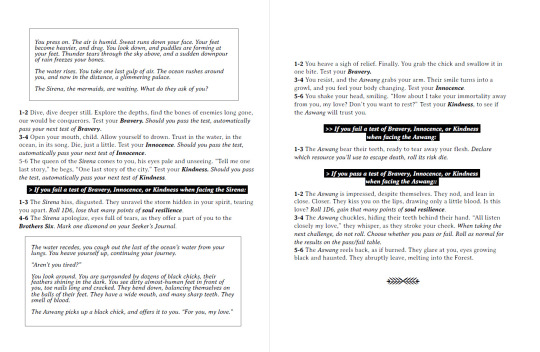
We Forest Three is one of the few solo games I've designed, and it was certainly the most difficult to write. It's essentially a choose your own adventure ttrpg, and I keep wondering if I've become a strong enough designer to come back and try making another game that follows a similar structure. Hah!
I think this game shows my obsession with the conflict between extremes: forest and city, supernatural beings and humans, family and the individual, love and horror.
This is also the game that notoriously everyone else has had better luck than me! Whenever I play this game, I die a horrible death 90% of the time. (I usually roll the worst stats, augh) Good thing I wrote those (many, many) deaths to be really fun I guess!

BALIKBAYAN is undoubtedly the game that caught everyone's attention. Many amazing opportunities have come my way because BALIKBAYAN made such an impression! I really really should get around to uploading the current version of the game, but even this version on itch is a great.
I'm proud of smashing together a distinctly 90s anime cyberpunk vibe with Filipino myth and folktales, while also pushing back against Shadowrun's idea that magic and tech are two opposing forces. Instead, magic and machinery are the same thing in BALIKBAYAN.
I'm also really glad that this game has connected to so many Filipinos in other countries, and resonated with them so deeply. It reminds me that even though I'm still perceived a foreigner in my own country (because I'm bi-racial), I can still connect to others like me through games.
One more thing I'll say is that I think BALIKBAYAN has unfortunately given people the impression that I'm very cool, only for them to meet me and realize I'm a dork. Sorry friends, I just write cool games, I'm actually dreadfully uncool.

Spectrum of Horror is a really fun experimental story game, that works well solo and with other people. I try to incorporate using the tarot in a way that's closer to how a tarot deck actually works.
I think this is (one of many) examples of why I would design straight into layout: Spectrum of Horror is technically eight micro games, and each one takes up a single spread. (Of course, a better designer than me could just figure it out with word count or whatever, but there you go)
Also here's a secret: all of the redacted words are still readable. You just have to select and copy the text from the PDF and paste it somewhere else to see what I wrote, heh.
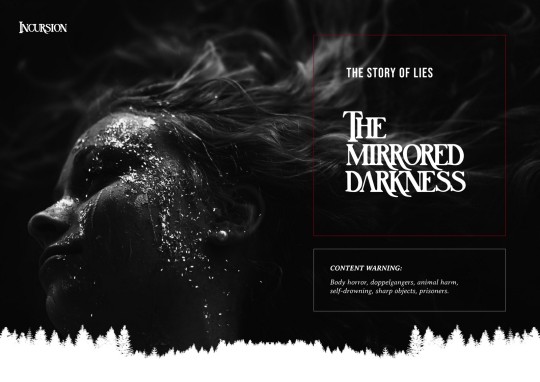
Brinkwood: Despair (still under its original title on my itch page, whoops) means so much to me, because it's my first FAN GAME. I loved someone else's TTRPG just that much that I had to write a prequel for it.
(I LOVE BRINKWOOD SO MUCH THAT I EVEN WROTE ANOTHER GAME FOR IT, but I'll talk about Brinkwood: Refuge another time!)
I think all of my games are games that are in response to other games, really. But Despair has such a special place in my heart because 1) I just LOVE Brinkwood that much 2) I really cherish the playtest memories I have from when I ran games on the Brinkwood discord server 3) Erik has been really generous with inviting other designers to create things in the space of his game.
Despair is almost finished (thanks to @ostrichmonkey-games helping me out on it) and I can't wait for folks to see the finished version!

Shitty Adventurers is here because, like Cozy Town, I think it's one of the few that are so unlike the rest of my games.
I'm not a very funny person. I'm like, your typical serious Capricorn. The best I can manage, only in front of a few people, is dark humor. I'm really shocked I managed to make this game, to be honest. (Tho humor is incredibly subjective, I have no idea if this game is actually really funny)
I think because this game is so outside of my "brand", and comedy TTRPGs aren't in high demand (afaik!), this game tends to get overlooked. Still, I've heard some wonderful stories from folks who've played the game!

Memory Hunter is a prequel to BALIKBAYAN, and it's also another tentative foray into OSR inspired games. I say tentative, but I'm also really proud of the writing and design here! I released Memory Hunter this year recently and it didn't seem to make too much of an impression, but I hope that if I keep working on game expansions that'll change!
There are many reasons I haven't felt comfortable or confident enough to create more games in the OSR space, but over the past year it's become more inviting! I'm really grateful that Tony Vacinda of Plus One EXP immediately offered to publish it (and Tony in general has been one of the most positive forces in the indie ttrpg space, for sure!)
I'm really looking forward to creating more things for Memory Hunter!
96 notes
·
View notes
Note
out of curiosity, do you have thoughts on a cultural history of political/financial corruption in kdramas? so many modern and historical kdramas center it as a primary conflict, and that’s so much less common in american/english language shows, which usually set up a “Big Bad Who’s Just Bad™, Not Corrupt.” do you or your followers happen to know if there’s historical or cultural context to that? i’m intrigued by the narrative’s prevalence in korean media and would love to hear your take!
it's honestly not something unusual about korean media it just illuminates what is strange about US media and how racially charged it all is. like the idea that someone can be just evil and powerful for no reason is intrinsically a tool of historical revision to obfuscate global power dynamics.
primary example is the way the US can be the hero of the story when they have an immense amount of power because they can claim their power came from goodness and their regime represents peace instead of their power coming from decades of global exploitation and violence against it being necessary for liberation. the US can use media to turn historical political figures like hitler into cartoon villains who are simply evil and bad ontologically rather than as a result of historical patterns. so then the US can be as fascist as they want but not be seen as a continuation of the same kind of violence. and at the same time they can frame the US's political enemies like the leaders of the dprk in the same "just evil" lens as hitler and have that be separated from modes of oppression that would make the differences between fascists and anticolonial independent socialist states obvious. it's a political device that hides fascists and is able to make them the heroes of the story while flattening the political autonomy and humanity of people in the global south. which is how ppl can just say ppl from communist states r inherently evil and must be killed and the US saved the poor victims of south korea from the dprk which should be wiped off the map with nuclear weapons.
corporate propaganda and the myth of the non evil corporation that is just providing services does not work in skorea because we are so obviously thoroughly and recently affected by capitalism. same with political corruption it is simple fact that corporations and administrations are corrupt and many people are fucked over by it every day and everyone knows it. it's not a media narrative it's just what happens in life and therefore it shows up in stories because it is important to us, it is killing us every day. the korean population is racially homogenous and occupies a very small plot of land with a 50,000 year shared history. skoreans r not varied enough regionally culturally or demographically for media to be about hypothetical people the vast majority of the population can't relate to. stories have to be relatable to as many people as possible across demographics like age and gender and class to make as much money as possible. the vast majority of people are struggling against capitalism and corruption. this is different from how white media makes their money, which is by representing wealthy powerful people that consider themselves the baseline of humanity and what is meant to be a normal human being.
like we had US backed dictators as presidents that seize power via military coup until the 90s and now it's rigged to elect ppl like a previous dictator's daughter and the insane current president. this is a direct result of US military presence on the peninsula and the neocolonial economic and political relationship between the US and the republic of korea. which is a direct successor to japanese colonialism on the peninsula. which is (among other things, like japanese fascism) a direct result of the decay of joseon because of political corruption and instability in the royal court. it is impossible to ignore these political patterns. and even our folktales from thousands of years ago address class inequality. koreans know evil for its own sake doesn't rly exist. i think it is just understood that evil is greed and selfishness that is given power to hurt many people via accumulated power across history, that evil operates across an axis of oppression.
95 notes
·
View notes
Text
Mythology, Folklore and Behind the Scenes Fact File
Welcome to the fact file for Foolish Fire, a place where you can find more information on the background of the inspirations behind my Secret Santa gift for the amazing @popjunkie42-blog 💖
All of the inspiration I have taken from myths and folktales have been adapted to the story I am trying to tell, but where I have made creative adjustments, I will try to point out the changes below.

Erebus Forest
In Greek mythology, Erebus is the personification of darkness. Some Ancient Greek authors also use Erebus to describe the particular form of gloom found in the Underworld. The concept of Erebus is most famously mentioned in Homer's Iliad, in which Erebus is the physical location that Hercules must venture into to collect the three-headed dog Cerberus.
This mythology inspired the name of the forest in Foolish Fire due to the importance of how dark this particular forest gets and the impact this has within this story.

Will-o'-the-wisps
These little creatures are tricky beings found in numerous forms in various European folktales. Traditionally known for mimicking the flickering light of a lantern, will-o'-the-wisps use their light to deceive weary travellers into getting lost.
Within this story, I decided to make it so that the will-o'-the-wisps are utilised by other creatures in the forest to capture prey and have a particular ability to cause a dreamlike trance in their victims. The title for this fic comes from the Latin translation for Will-o’-the-Wisp (ignis fatuus), which directly translates to foolish fire in English.
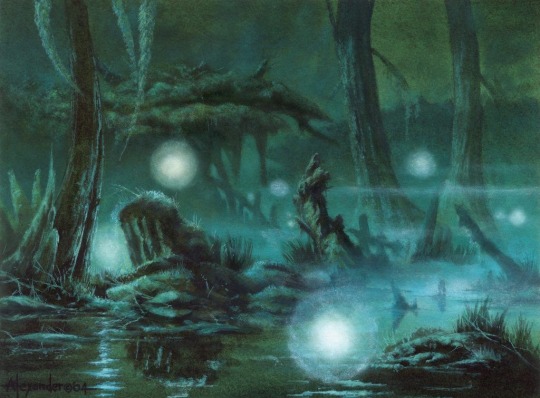
Belisama Lake
The lake Feyre finds herself wading into during Foolish Fire is called Belisama Lake, a name inspired by the Celtic Goddess of lakes and fire, whose name, it has been reported, translates to ‘Most Mighty One’. During the Roman period, the river currently known as Ribble River, which runs through the North of England, was referred to as the Belisama in honour of the Goddess.

The Monster in the Lake
The creature Feyre encounters in the waters of the Erebus forest was inspired by a mixture of one very famous creature from Scottish folklore, and an aquatic beast from approximately 240 million years ago.
The Loch Ness Monster
The concept of creatures lurking beneath the surface in large bodies of water was not new in 1933 when the Loch Ness Monster was first brought to light on a global scale, however, Nessie is perhaps the most famous of all mythological lake monsters. Nestled in the Scottish Highlands, Loch Ness attracts vast numbers of tourists every year, hoping to catch a glimpse of the famed creature who is said to reside there.

The Nothosaurus
Whilst the inspiration to add an underwater challenge to Foolish Fire came from the legend of Loch Ness, the real-life inspiration for the creature itself comes from a long extinct semi-oceanic reptile, who at 14 metres in length, dominated waters in the Triassic Period. The Nothosaurus was a carnivorous animal with needle-like teeth and a thick tail that acted as a paddle to steer it through the water.
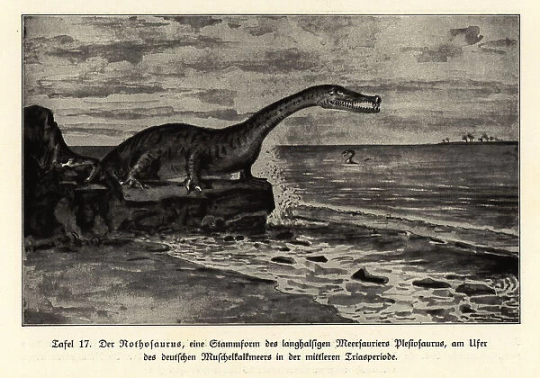
The Empusa
This shape-shifting female, with one copper leg (and sometimes a donkey’s leg, too), is commanded by Hecate in Greek mythology and uses her abilities to seduce and feed on young men. For this reason, she was compared to a vampire in the ‘Dictionary of Greek and Roman Biography and Mythology’ by William Smith (1849).
In Foolish Fire, the Empusa roams the woodlands of Pythian and is one of the most wanted creatures by all seven High Lords for the numerous violent deaths she causes yearly.

The Waterfall
The waterfall Rhys and Feyre stumble upon in chapter three is inspired by Plitvice Lakes National Park and the stunning waterfalls that are found there.

The glowing element of the waterfall is inspired by the natural beauty of bioluminescent waters like those found in many locations such as New Zealand, Cambodia and the Maldives.

The Red Shoes
The Red Shoes is a Danish fairytale, written by Hans Christian Anderson in the mid-1800's. It has been adapted numerous times, perhaps most famously in 1948 in a film adaptation by Michael Powell and Emeric Pressburger. The tale also inspired singer-songwriter Kate Bush's seventh studio album of the same name.

The Cyclops
Over the years there were many interpretations of cyclops in Greek mythology, famously however, three talented cyclopes named Arges, Steropes, and Brontes, help to craft Zeus's thunderbolt. With their distinct single eye in the centre of their heads, cyclopes are incredibly recognisable characters, even in the modern age.
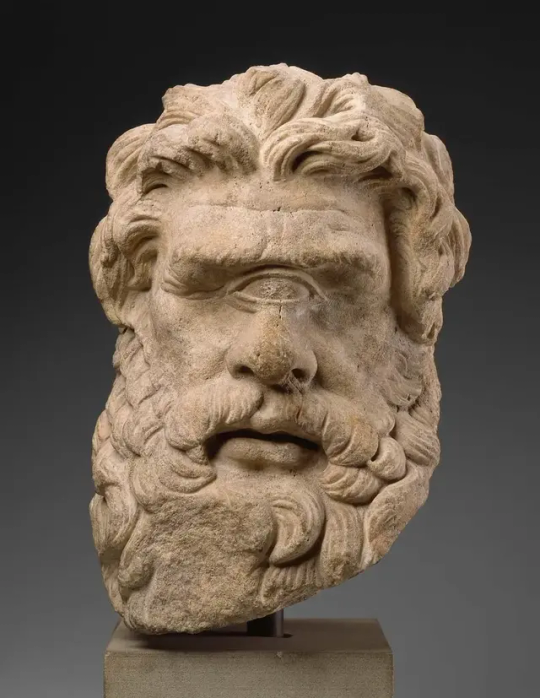
Cerberus
Hades three-headed dog Cerberus is the famed creature who guards the gates to the Underworld. His three heads and serpents tails makes him an incredibly terrifying creature in Greek mythology, but in Foolish Fire a baby Cerberus is the sweetest of all little pups and makes the perfect addition to Feyre and Rhysand's perfect little family.


Click here to find to the series masterlist
10 notes
·
View notes
Text
Global Reading Challenge: 109/200
A personal reading project, where I endeavour to read a book from each of the 193 United Nations member states plus 7 extra* ones. My main goal is to have fun and to learn, but I do have rules for myself:
The book should be fiction, and preferably a novel. I allow plays and poetry, but non-fiction only as the very last resort
The author should have the nationality of their country. If they have lived a good portion of their life there and genuinely represent the local culture, then it's ok if they've been born somewhere else
I want to read books that represent the local literary tradition. Preferably a "classic", a book that illustrates the local culture, or a book that is famous within the country. I avoid popular and contemporary fiction, and books that play outside of the country.
*Extra states have been determined based on UNESCO membership and personal interest where I want to read more books from. This is not a political statement.
The List
Afghanistan: Atiq Rahimi - Earth and Ashes
Albania:
Algeria: Albert Camus - The Stranger (FR)
Andorra: Teresa Colom - Mlle Keaton et autres creatures (FR)
Angola: José Eduardo Agualusa - The Book of Chameleons
Antigua and Barbuda
Argentina: JL Borges - Fictions
Armenia: Raffi - The Fool
Australia: Doris Pilkington/Nugi Garimara - Follow the Rabbit-Proof Fence
Austria
Azerbaijan
Bahamas: Telcine Turner - Woman Take Two
Bahrain
Bangladesh
Barbados
Belarus: Uladzimir Karatkievich - King Stakh's Wild Hunt
Belgium
Belize: Zee Edgell - Beka Lamb
Benin
Bhutan
Bolivia
Bosnia and Herzegovina
Botswana: Bessie Head - Maru
Brazil: Paulo Coehlo - The Alchimist
Brunei Darussalam: K.H. Lim - Written in Black
Bulgaria: Elias Canetti - Komödie der Eitelkeit (GER)
Burkina Faso: Norbert Zongo - Le parachutage (FR)
Burundi: Samoya Kirura - La femme au regard triste (FR)
Cabo Verde: Germano Almeida - The Last Will & Testament of Senhor da Silva Araújo
Cambodia
Cameroon: Francis Bebey - King Albert
Canada: S. Alice Callahan - Wynema: A Child of the Forest
Central African Republic: Étienne Goyémidé - Le dernier Survivant de la caravane
Chad: Told by Starlight in Chad - Joseph Brahmin Seid
Chile
China
Colombia
Comoros: Ali Zamir - A Girl Called Eel
Congo
Cook Islands*: Kauraka Kauraka- Oral tradition in Manihiki
Costa Rica: Carlos Luis Fallas - Mamita Yunai (Die Grüne Hölle, GER)
Côte D’Ivoire
Croatia
Cuba
Cyprus: Kyriakos Charalambides - Selected Poems
Czech Republic: Jan Neruda - Prague Tales
DPRK (North Korea)
DRC
Denmark
Djibouti
Dominica: Jean Rhys - Wide Sargasso Sea
Dominican Republic
Ecuador
Egypt
El Salvador: Horacio Castellanos Moyà - Le bal des vipères (FR)
Equatorial Guinea: Trifonia Melibea Obono - La Bâtarde (FR)
Eritrea: Helen Berhane - Song of the Nightingale
Estonia
Eswatini: Malla Nunn - A Beautiful Place to Die
Ethiopia
Fiji: Rajni Mala Khelawan - Kalyana
Finland
France: Pierre Louys - Aphrodite: Ancient Manners
Gabon: Daniel M Mengara - Mema
Gambia
Georgia
Germany: Thomas Mann - Buddenbrooks
Ghana: Ayi Kwei Armah - The beautiful ones are not yet born
Greece
Greenland*: Knud Rasmussen - Eskimo Folktales
Grenada: Merle Collins - The Colour of Forgetting
Guatemala: Miguel Angel Asturias - Strong Wind
Guinea: Camara Laye - The Radiance of the King
Guinea Bissau: Abdulai Sila - The ultimate tragedy
Guyana Haiti
Honduras: Froylan Turcios - El Vampiro (SPA)
Hungary: Arthur Koestler - Darkness at Noon
Iceland
India: Rabindranath Tangore - The Home and the World
Indonesia
Iran: Sadegh Hedayat - The Blind Owl
Iraq: Andrew George - The epic of Gilgamesh
Ireland: James Joyce - Dubliners
Israel
Italy: Italo Calvino - If on a Winter's Night a Traveller
Jamaica: Andrew Salkey - Hurricane
Japan
Jordan: Amjad Nasser - L'ascension de l'amant (FR)
Kazakhstan
Kenya
Kiribati: Teresia Teaiwa & Vilsoni Hereniko - Last Virgin in paradise
Kosovo*
Kuwait
Kyrgyzstan: Chingiz Aitmatov - Jamila
Laos: Outhine Bounyavong - Mother's Beloved
Latvia
Lebanon
Lesotho
Liberia: Bai T. Moore - Murder in the Cassava Patch
Libya
Liechtenstein
Lithuania: Vingas Kreve - The Herdsman and the Linden Tree
Luxembourg: Norbert Jacques - Dr Mabuse der Spieler (GER)
Madagascar: Jean-Joseph Rabearivelo - Traduit de La nuit (FR)
Malawi
Malaysia
Maldives: Abdullah Sadiq - Dhon Hiyala and Ali Fulhu
Mali
Malta
Marshall Islands: Kathy Jetnil-Kijiner - Iep Jaltok: Poems from a Marshallese Daughter
Mauritania: Moussa Ould Ebnou - L'Amour Impossible (FR)
Mauritius
Mexico: Mario Bellatín - Beauty Salon
Micronesia: Emelihter Klieng - My Urohs
Monaco: Louis Notari - La légende de Sainte Dévote (FR)
Mongolia: Galsan Tschinag - Die Karawane (GER)
Montenegro: Petar II Petrovic Njegos - The Mountain Wreath
Morocco: Abdellatif Laâbi - Le bâpteme chacaliste (FR)
Mozambique
Myanmar
Namibia
Nauru: Nancy Viviani - Nauru, phosphate and political progress
Nepal
Netherlands
New Zealand: Witi Ihimaera - The Whale Rider
Nicaragua: Rubén Dario - Azul… (SPA/ENG)
Niger
Nigeria: Chinua Achebe - Things Fall Apart
Niue*: John Puhiatau Pule - The Bond of Time: An Epic Love Poem
North Macedonia
Norway: Henrik Ibsen - A Doll's House
Oman
Pakistan: Jamil Ahmad - The Wandering Falcon
Palau: Hermana Ramarui - The Palauan Perspective: a poetry book
Panama: Ricardo Miró - Las Noches de Babel (SPA)
Palestine*: Ibrahim Nasrallah - Prairies of Fever
Papua New Guinea: Vincent Eri - The Crocodile
Paraguay
Peru: Mario Vargas Llosa - In Praise of the Stepmother
Philippines
Poland
Portugal
Qatar
Republic of Korea
Republic of Moldova
Romania
Russian Federation: Leo Tolstoi - The Death of Ivan Ilyich
Rwanda
Saint Kitts and Nevis: Caryl Philips - Cambridge
Saint Lucia: Derek Walcott - Omeros
Saint Vincent and the Grenadines
Samoa: Albert Wendt - Leaves of the Banyan Tree
San Marino: J. Theodore Bent - A freak of Freedom: or, the Republic of San Marino
Sao Tome and Principe:
Saudi Arabia
Senegal
Serbia
Seychelles: Antoine Abel - Coco Sec (FR)
Sierra Leone
Singapore
Slovakia: Milan Rúfus - Strenges Brot
Slovenia: France Prešeren - Poems
Solomon Islands: John Saunana - Cruising Through the Reverie
Somalia: Hadraawi - The Poet and the Man
South Africa: JM Coetzee - Disgrace
South Sudan: Nyuol Lueth Tong - There is a country
Spain: Miguel de Unamuno - Abel Sanchez and Other Stories
Sri Lanka
Sudan
Suriname
Sweden: August Strindberg - The Red Room
Switzerland
Syrian Arab Republic: Ibn al-Nafis - Theologus Autodidactus
Taiwan*
Tajikistan: Shavkat Niyazi - At the Foot of Blue Mountains: Stories by Tajik Authors
Thailand
Timor-Leste: Xanana Gusmão - Mar Meu
Togo
Tonga: Epeli Hau'ofa - Tales of the Tikongs
Trinidad and Tobago
Tunisia: Albert Memmi - The Pillar of Salt
Turkey
Turkmenistan: Magtymguly - Poems from Turkmenistan
Tuvalu: Neil Lifuka - Logs in the current of the sea
Uganda: Okot p'Bitek - Song of Lawino & Song of Ocol
Ukraine: Andrey Kurkov - Death and the Penguin
United Arab Emirates
UK: Virginia Woolf - Mrs Dalloway
United Republic of Tanzania
USA: John Steinbeck - Grapes of Wrath
Uruguay
Uzbekistan: Abdullah Qoqiriy - Bygone Days
Vanuatu: Grace Molisa - Black Stone
Vatican City*: Andrew Graham-Dixon - Michelangelo and the Sistine Chapel
Venezuela
Viet Nam
Yemen: Abdul-wali - They die strangers
Zambia
Zimbabwe
#booklr#currently reading#reading challenge#classic literature#literature#books#book recommendations#global reading#Sam reads#PLEASE let me know if the Read More breaks since this is a very longue post#I will link to my book reviews of the books I've read when I post them!!!
22 notes
·
View notes
Note
for the fic writers ask game: 7 & 19!!
7. your preferred writing fonts
almost always arial just by default. I find sans serif fonts a lot easier to read at smaller point sizes than serif fonts (supposedly that's usually a dyslexic thing but I can definitely confirm my brother is dyslexic and I am not).
HOWEVER I recently changed my go-to font to Noto Sans Arabic and that's been a major game changer, I don't have to make the arabic font like twice the size of the english to read it anymore, and the noto sans english more or less looks like normal arial.

oh yeah i also have my word processor set to dark mode, thanks libre office
19. the most interesting topic you’ve researched for a fic
good question, anything that happens in the last ~30 years I have a handful of wikipedia articles open with global events around the right time to make sure that whatever I'm suggesting either happened or is reasonable (I suck at remembering when things actually happened so even like...when I was writing in the era of the recession I had to have wikipedia open lmao). Recently included and then removed a line about the guy who threw his shoes at Bush.
probably my favorite though is anything to do with queer culture in the 70s/early 80s. straight people seem to think none of us existed until the AIDS crisis, or that gay people were "more respectable back in the day" but my favorite book about queer liberation is from the 70s.
...or local folktales and appalachian witchcraft and herbalism type stuff. my grandfather taught me a lot but i fill in the blanks with semi-fact-based research and appalachian snavid is real, to me
Historically I've been pretty paranoid about researching anything too weird bc my parents used to have a packet tracker on the router. Now that I have a VPN I'm still paranoid about it though lmao.
3 notes
·
View notes
Text
worldbuilding: NQ systems are written in a purely functional, dependently typed theorem prover and programming language called Rjaba. The name is a reference to an East Slavic folktale about a hen who laid a golden egg; this theme seems to have historical significance, though the exact context for the reference seems to have been lost to link-rot.
The syntax and semantics of Rjaba have a passing resemblance to historically important programming languages like Idris, Prolog, Lua, and Unison.
Headless systems tend to expose a command-line interface over a serial port. This CLI accepts a set of imperative commands and also acts as an Rjaba REPL.
Users of other languages tend to find Rjaba obtuse, difficult to mentally model, and underdocumented. Enthusiasts attempt to demonstrate its virtues at every opportunity given.
Here's a summary of the syntax that's been used in these documents so far. (The colors and formatting have significance.)
General
a : A
Asserts that a is a term of type A.
a = b
Asserts that a is equal to b.
λa. f a
A unary function that takes one argument a and returns the result of applying the function f to a.
Interactive contexts
(CLIs, REPLs, etc.)
g:Name
Identifier for the value called Name in the visible global context.
a := b
For the current interactive context, redefines the identifier a to value b.
(more to come!)
9 notes
·
View notes
Text
Tomorrow X Together: ‘Gen Z can relate to this EP’s story of growing up’
Tomorrow x Together on taking inspiration from growing pains for their latest EP and becoming the first K-Pop group to play Lollapalooza

As Tomorrow X Together release their fifth EP, ‘The Name Chapter: Temptation’, the globally renowned K-pop group have discussed the inspiration behind the record and their continued approach of sharing their generation’s stories.
The five-piece boyband returned with their latest release today (January 27), nine months after their last EP, the acclaimed ‘minisode 2: Thursday’s Child’.
That previous EP broke the group’s previous pre-orders record, shifting 1.44million copies before the day of release. It also continued to expand the group’s reach across the world, bringing them history-making opportunities like becoming the first K-pop act to perform at Chicago’s Lollapalooza.
Speaking to Rolling Stone UK, Tomorrow X Together discussed taking inspiration from the growing pains of youth, Peter Pan, and Korean folktales, plus their creative growth as songwriters and touring artists.
The story of Peter Pan is interlinked with this EP, from the concept trailer to ‘Farewell, Neverland’. How did you take inspiration from that story on this EP?
Soobin: “Even one of our track’s names is ‘Farewell Neverland’ so it’s pretty straightforward. It’s about a story of youth who decides to go on a very long journey for their future, but falls into this temptation that’s right in front of their eyes. We tried to express this in a Neverland where you stay as a boy forever, like in Peter Pan. So Neverland is a very beautiful and free place, but you have to leave it in order to grow.”
You’re consistently praised for capturing stories of your generation in your music – how does ‘The Name Chapter: Temptation’ move these stories forward following the events of ‘Thursday’s Child’?
Beomgyu: “We’ve been talking about the stories of our generation ever since our debut. So we’ve talked about friendship, love, heartbreaks, and sometimes at one point during the process of growing, you sometimes want to settle with what you are now and don’t want to grow up. So the process of growing up is always accompanied by growing pains, so I’m sure the people of Gen Z can resonate with the story of feeling hesitant about growing up.”
This EP is described as the “most TXT-ish EP to date” – how does it reflect the group more than past releases?
Taehyun: “I think all the albums that we’ve released so far have expressed us very well, but I’m sure we’ve grown album by album. For every album, I think our contributions get even bigger and bigger. Especially for Yeonjun – he wrote the topline for the track ‘Happy Fools’ and we all contributed to the lyric writing for that song too. I think as we release more albums, we are talking about our own stories even more.”
‘Sugar Rush Ride’ incorporates the Korean traditional folktale Chunhyangjeon in the lyrics and traditional Korean dances in the choreography. What does it mean to you, particularly as a band with huge global popularity, to be able to highlight these parts of Korean culture in your music?
youtube
Hueningkai: “I really liked the line in Chunhyangjeon, which is ‘Come here and let’s play more’ and I think that line really went well with the title track. So we put it in the lyrics to bring out the temptation vibe more.”
Taehyun: “Of course, K-pop is getting bigger and bigger all around the world and I think it’s such a blessing and an honour to be part of that scene. We are trying to do even better and trying to make contributions to that scene even further.”
You completed your first world tour last year and became the first K-pop act to perform at Lollapalooza – what was that experience of finally getting to take your music around the world like?
Beomgyu: “It was our first time performing in such a big venue, so it was an opportunity for me to learn how thrilling and exciting it is to perform in person in front of our fans in one venue. I was committed to my job before, of course, but I think I became even more committed and more appreciative to my work. So I can’t wait to put on good performances with good music in the future.”
Hueningkai: “I could really feel the love that we get all around the world through this world tour and I was really touched and surprised by the way our fans sing along to our Korean lyrics.”
TXT are often called the leaders of K-pop’s fourth generation – a big title, but also one that could be a burden at times. What pressures and challenges do being seen as leaders bring to you and how do you deal with those?
Yeonjun: “Of course, we do feel some pressure but I think that pressure is what drives us to grow further and what motivates us so I try to think of it as a positive thing.”
#txt#tomorrow x together#230128#article#rolling stone#soobin#yeonjun#beomgyu#taehyun#hueningkai#The Name Chapter: TEMPTATION#The Name Chapter
30 notes
·
View notes
Note
📽 & 🩸!!
📽 can you recommend me an obscure horror film?
I know ken russell is hardly obscure to many horror fans but I feel like some of his films are less well known globally, such as the lair of the white worm (1988). it's loosely based on a bram stoker and stars peter capaldi and hugh grant very early in their careers. it plays on english folktales of giant serpents and strange magic, but with a weird (and sexy) twist on the theme. very homoerotic and very good.
if you want a film along a similar vein but with more comedy/horror weirdness then watch cemetery man (1994). it's an italian film starring rupert everett in an english-speaking role. he plays a brooding cemetery caretaker who has to deal with corpses rising from the dead while trying to find and pursue love. it's lurid and strange and sometimes beautiful, despite its faults (his sidekick being the main one). definitely worth a watch if you want a fun night!
🩸 least favourite horror trope/cliche in your opinion?
I don't really enjoy any of the big slasher franchises with unkillable antagonists (I've seen the first few entries in each of the halloween, friday the 13th, texas chainsaw massacre and a nightmare on elm street series, and they just didn't engage me). in post-apocalyptic/dystopian settings, I'm a bored of the 'humans are the REAL evil' trope, because I think that genre is more interesting when it explores other impacts of the end of the world (and prioritises love and human connection). also this applies to all of american cinema lol but I ESPECIALLY hate when the 'broken couple/family brought together again' cliche is used in horror, because it's so lazy and makes even less tonal sense in that genre. give me the mist (2007) levels of bleak any day over that
horror emoji ask game 👻
17 notes
·
View notes
Text
Duck Prints Press Celebrates Folktales and Fables Week with Our Favorite Folktale-Inspired (often Queer) Fiction

This week, March 19th to 25th, is World Folktales and Fables Week! Duck Prints Press is celebrating with two blog posts: yesterday’s, which focused on the folktales, fables, and myths that influenced us as creators, and today’s, about our favorite folktale-inspired fiction (queer and otherwise).
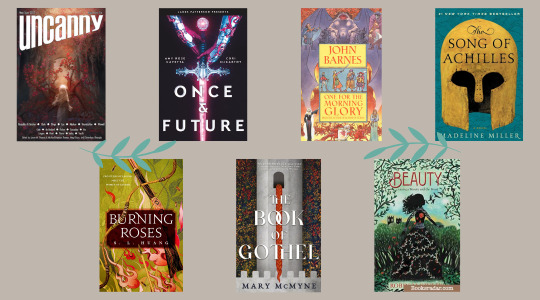
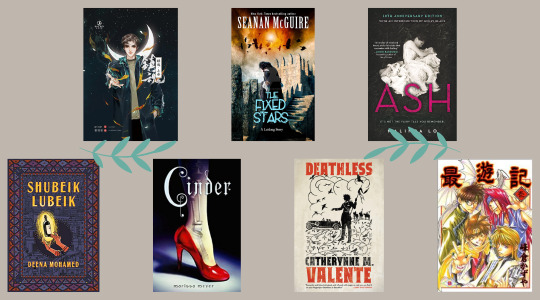
Two Hands, Wrapped in Gold by S.B. Divya (suggested by Dei)
This past year I read this story in Uncanny Magazine Issue 46, and it’s really stuck with me. It’s a retelling of a folktale very familiar to many Westerners, and the changes made turn it into a very compelling new story all on its own. No spoilers on what story it is, but suffice to say it takes a new perspective and I love this piece to bits.
Once & Future by Cory McCarthy and A. R. Capetta (suggested by Tris Lawrence)
I’m currently really enjoying the duology by Amy Rose Capetta and Cori McCarthy which is an Arthurian retelling in space with a female Arthur and multiple queer rep. It’s YA, and it’s just… fun? I love how it played with the the known pieces, and plays with Merlin’s aging backwards, and works to both fit within the expected and turn things around at the same time.
I’ve finished Once & Future (in Space) and just received Sword in the Stars (confronting the past) and can’t wait to get to read it after I finish what I’m already reading.
One For the Morning Glory by John Barnes (suggested by Nina Waters)
My favorite folktale-inspired book is John Barnes’s One for the Morning Glory. It’s just beautiful.
The Song of Achilles by Madeline Miller (suggested by Owlish)
Unfortunately, it does have a major character death because…well… Achilles. It is so beautifully written, though.
Burning Roses by S. L. Huang (suggested by Shadaras)
This novella takes inspiration from the fairytale Red Riding Hood and the legend of Hou Yi (as well as other classic Germanic fairy tales and Chinese legends!), and imagines both of those characters as middle-aged women uncertain of their place in the world. They travel together, fighting monsters, and tell each other about their youths and families (both of them have wives and children). The ending is happy, but the path there takes time and reflection from everyone involved. I love it because of how it blends two wholly separate mythologies together into one cohesive world, as well as for showing what might happen after the stories we know end.
The Book of Gothel by Mary McMyne (suggested by Owlish)
It’s a feminist retelling of Repunzel from the point of view of Mother Gothel setting her story straight.
Robin McKinley’s Fairy Tale Novels (suggested by E C)
Robin McKinley’s fairy tale novels are beautifully written (but sometimes brutal) retellings of some classic stories.
Guardian/Zhen Hun/镇魂 by Priest (suggested by boneturtle)
A danmei featuring humans, ghosts, demons, zombie kings, and all sorts of otherworldly creatures all wrapped up in an apocalyptic chinese folktale mashup from the master herself. taught me that 1) you are allowed to play with your own mythology, 2) fairytales are gay, 3) the apocalypse isn’t the end, just another spin of the wheel.
October Daye Series by Seanan McGuire (suggested by Sebastian Marie)
I love this series, there’s like eleven books, the first being Rosemary and Rue. They’re inspired by Irish folklore concerning the Faerie people.
Ash by Malinda Lo (suggested by E C)
“Ash” by Malinda Lo is a very queer Cinderella retelling.
Shubeik Lubeik by Deena Mohamed (suggested by Adrian Harley)
A gorgeous graphic novel of the modern world, but where wishes are a commodity, bought, sold, and processed. The graphic novel follows three people who come into possession of a “first-class” wish and their intertwining tales. It’s a beautiful exploration on a global and personal scale (what does colonialism look like in this world? How does law enforcement treat those who are seen as unworthy of having wishes? But also, if you’re a queer college student with major depression, what do you wish for to fix the mountain you feel crushing you? Are you even worthy of a wish?)—and it’s also really funny! I cannot say enough good things about this book, because I discovered it by chance on my library shelf last month and want everyone to know about it.
The Lunar Chronicles Series by Marissa Meyer (suggested by E C)
It’s sci-fi that brings Cinderella, Snow White, Red Riding Hood, and Rapunzel characters into the same universe.
Deathless by Catherynne M. Valente (suggested by Anonymous)
[[[A retelling of a Russian folk tale about Koschei the Deathless.]]]
Saiyuki by Kazuya Minekura (suggested by Anonymous)
It’s a manga with a distinctly retro anime-style retelling of the Journey to the West that bluntly confronts themes of loss, grief, redemption, and the long, long road to admitting you care about other people. It’s been on and off hiatus for years due to the author’s poor health, but I still adore it. This series taught me that it’s the journey that matters, not the destination.
Bonus!
The Mists of Avalon by Marion Zimmer Bradley (an inspiration to multiple people, suggested by multiple people)
When we asked our contributors to suggest the folktales and fables that inspired them, and their favorite folktale-inspired stories, The Mists of Avalon ended up getting nominated in both categories!
boneturtle said: retelling of Arthurian legend from Morgana’s POV. Not explicitly queer but features the women of the story with the men as sort of incidental, and given to me by my bi friend who said it helped her understand her own sexuality. and it’s beautifully, beautifully written.
-
There’s a wonderful number of fiction stories, novellas, novels, and series inspired by folktales and fables, and a growing number of those are queer. Have you got a favorite we didn’t mention? We’d love to hear about it!!
Who we are: Duck Prints Press LLC is an independent publisher based in New York State. Our founding vision is to help fanfiction authors navigate the complex process of bringing their original works from first draft to print, culminating in publishing their work under our imprint. We are particularly dedicated to working with queer authors and publishing stories featuring characters from across the LGBTQIA+ spectrum. Love what we do? Want to make sure you don’t miss the announcement for future giveaways? Sign up for our monthly newsletter and get previews, behind-the-scenes information, coupons, and more!
Want to support the Press, read about us behind-the-scenes, learn about what’s coming down the pipeline, get exclusive teasers, and claim free stories? Back us on Patreon or ko-fi monthly!
16 notes
·
View notes
Text
2022 Reading Log, pt 27

131. Fungipedia by Lawrence Millman. The third of Princeton University Press’ –pedia titles I’ve read. This book deals with fungi from A-Z, (Agarikon to Zygomycetes). Some topics that are covered include various habitat requirements of fungi, individual species with notable appearances or life histories, mycologists and mushroom enthusiasts, and folklore. The classic “Santa Claus is a shaman hopped up on mushrooms” tale gets an airing here, as does the less familiar to me “King Tut’s curse was a fungal infection” legend. King Tut’s curse was journalistic hype, let’s be real. The author is a bit cranky about the movement towards molecular taxonomy, but is otherwise enthusiastic about his subject and eager to encourage others. Of the –pedias, I’d recommend this one above Birdpedia, but liked Dinopedia better.
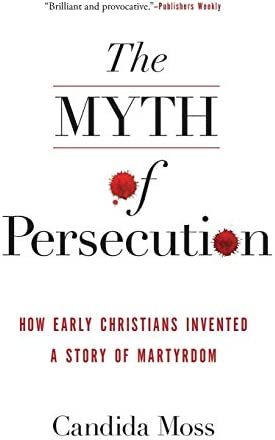
132. The Myth of Persecution by Candida Moss. Great name for an author read just after a book about fungi. Moss’ thesis is that Christianity was rarely the subject of massive persecutions in the Roman Empire, and that the majority of stories about martyrs have little to no basis in historical fact. Rather, they were written during periods of peace and Christian power for political purposes and for entertainment value, shoring up the idea that the orthodox Church was tied directly to Christ and that various pagans and heretics were Satanic. Moss also spends time dismantling the idea (that I was relatively unfamiliar with, as I don’t spend much time reading Christian apologia) that Christian martyrdom was something brand new and unique, demonstrating that Christian martyr narratives borrow, like all other parts of Christianity, from Greek, Roman and Jewish sources. This book was written in 2013, and makes references to the growing polarization of right wing Christian groups in the United States and how religion is weaponized in the modern era. The book is slightly dense, but advocates its case clearly and precisely, and provides regular summaries to bring the points home—this is clearly a book meant to persuade as much as inform.

133. Some We Love, Some We Hate, Some We Eat: Why It’s So Hard to Think Straight About Animals by Hal Herzog. Cognitive dissonance. That’s the main argument. This book talks about how people hold multiple different, mutually conflicted, moral ideas about animals in their heads all at once, and how, roughly speaking, that’s a good thing. The book covers such diverse topics as factory farming, pet ownership, a rescue for wolf-dogs, cockfighting and animal liberation. In my opinion, one of the book’s biggest strengths is how it talks about the perils of doing science and publishing it, such as the replication paradox, correlation vs. causation and inherent bias, in a way that’s fun and easy for laymen to understand. The book’s cover copy is somewhat hyperbolic (the book is not combining Malcolm Gladwell, Mary Roach and Jared Diamond), but it’s still a worthwhile read.

134. About Time: A History of the World In Twelve Clocks by David Rooney. The subtitle isn’t accurate—a lot more than twelve individual clocks are highlighted here—but “a history of X in Y” is a schema that apparently pushes paper. Rather, this book is about twelve uses for clocks, and often about how they have been used as agents of control by governments. The author was once the curator of timekeeping at Greenwich, so there’s a lot of talk about the establishment of Greenwich Mean Time, and how its imposition was part of the British Empire’s extension of global power. Apparently, the Saudi government is trying to get the Mean Time set to Mecca, which I was unaware of. The book is, appropriately for a book about clocks, well-paced, and made for a pleasant read.

135. Folktales from the Gambia: Wolof Fictional Narratives translated and annotated by Emil A. Magel. “Translated and annotated” is appropriate here, because after the first twenty pages or so, the text is transcriptions of the oral tradition, told by a variety of griots, the storytelling caste in Wolof society. The stories are a mix of classic folktale tropes with morals and twists rooted in Wolof culture, and the annotations at the end help to explain cultural context that a reader might otherwise miss. Each story has the personal touches of its tellers, and a few stories have multiple tellings, by different people with their own spin on it (some of the most charming are those told by children, griots in training practicing how to tell stories).
#reading log#folktales#african folklore#sociology#history#horology#psychology#classical rome#religion#christianity#martyrdom#fungi#mycology
25 notes
·
View notes